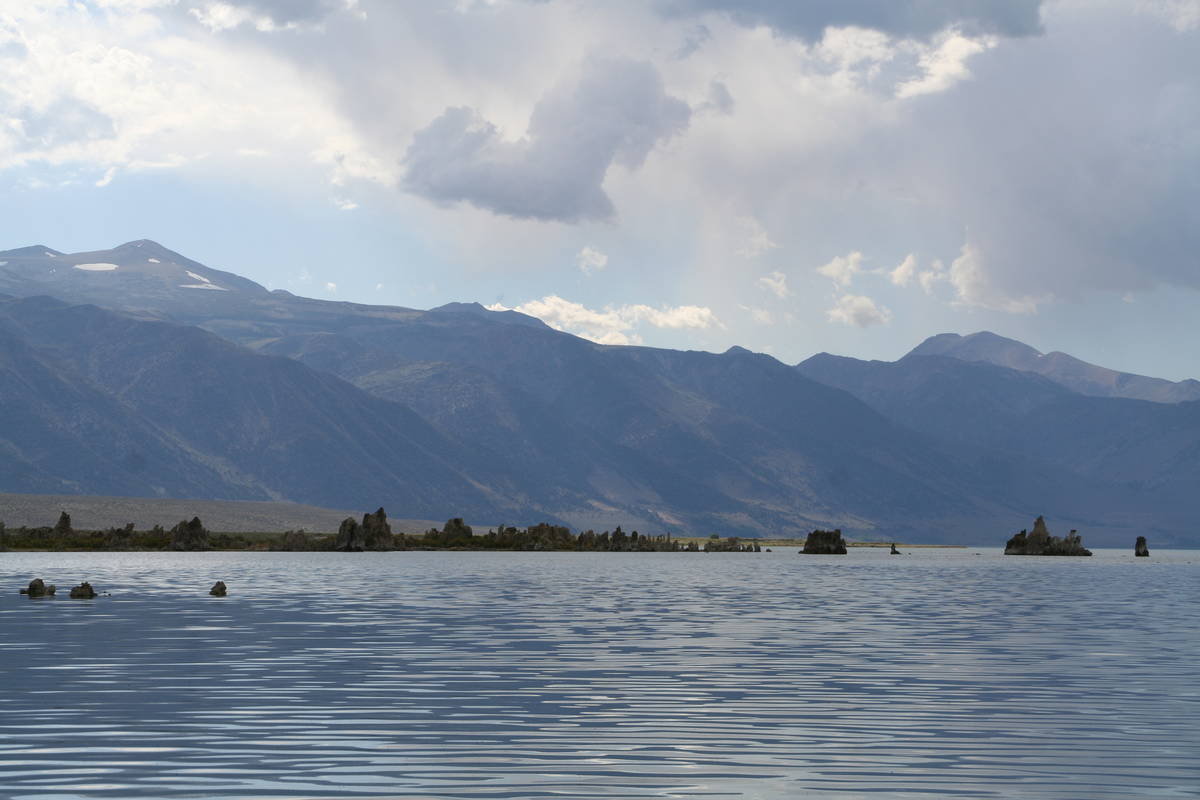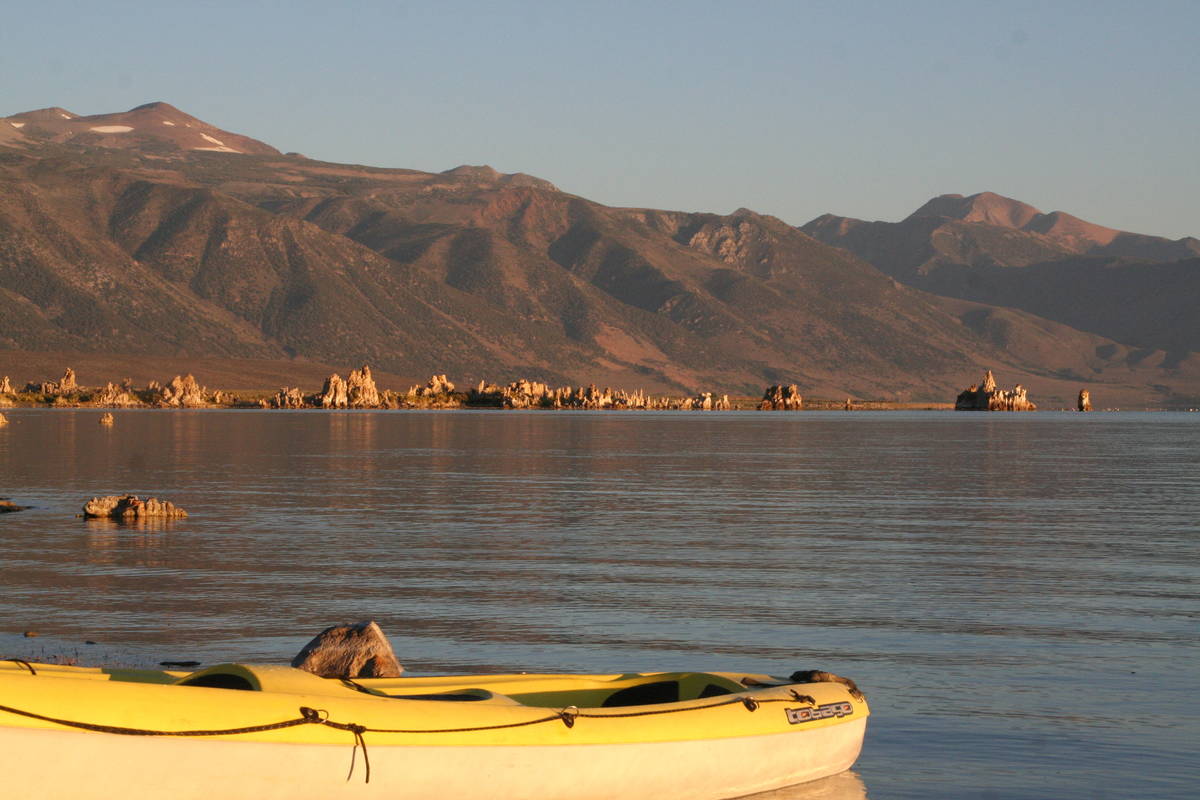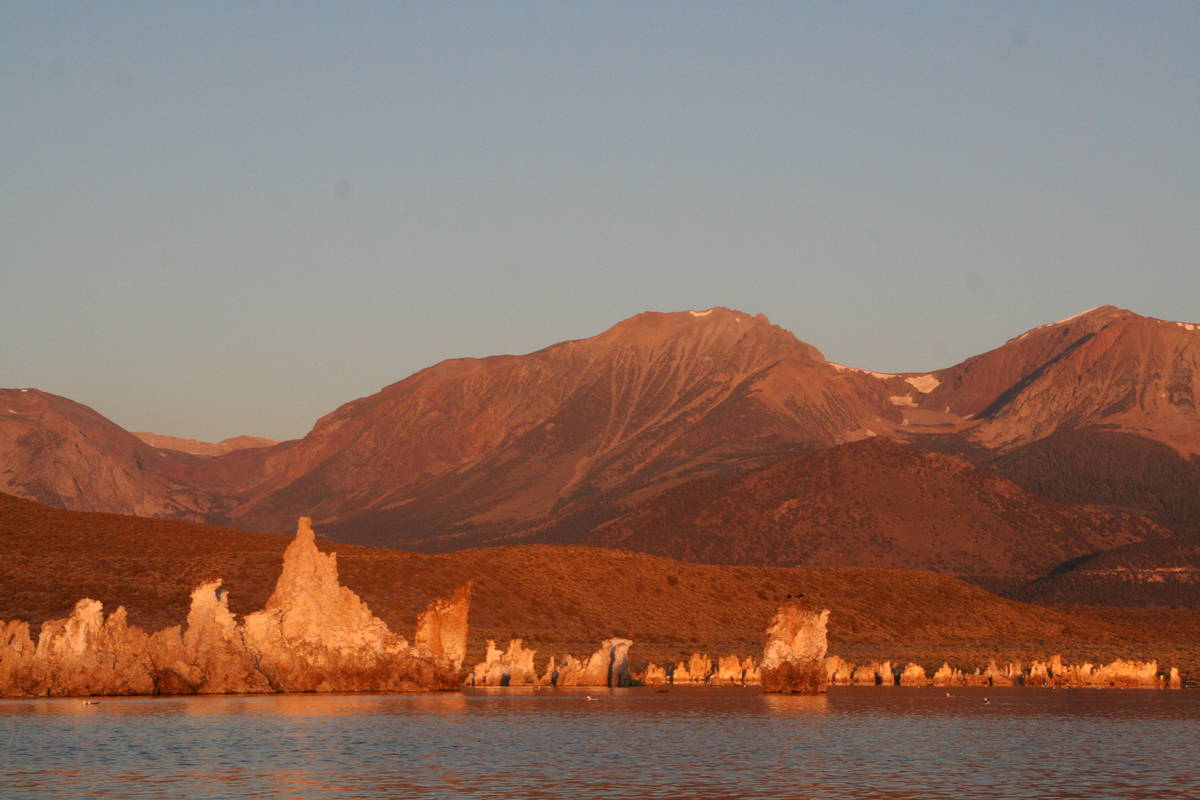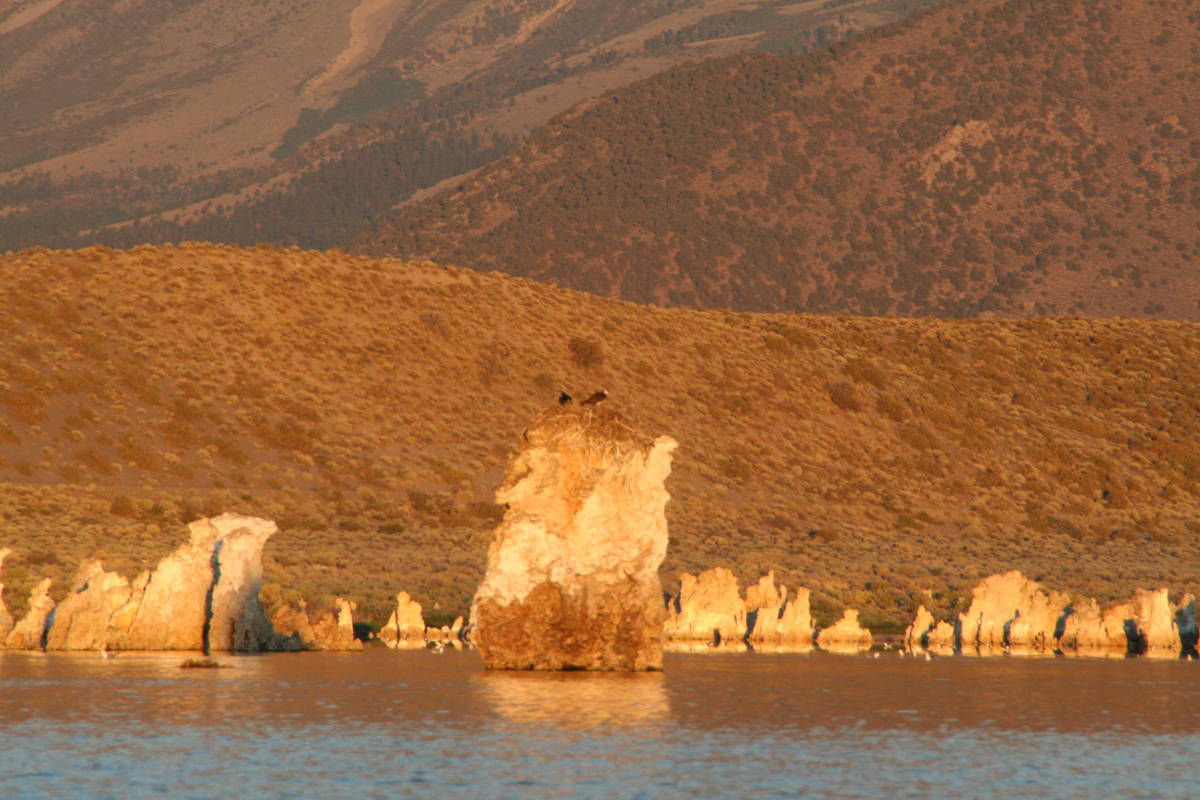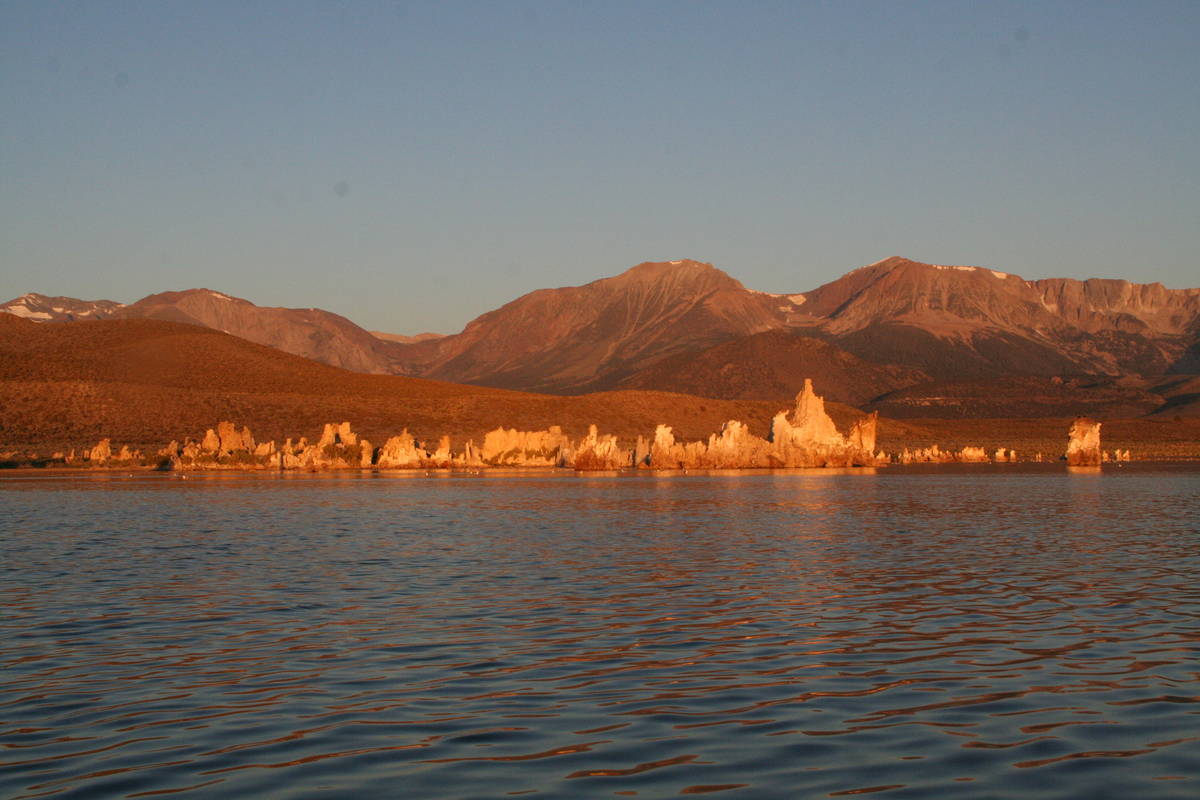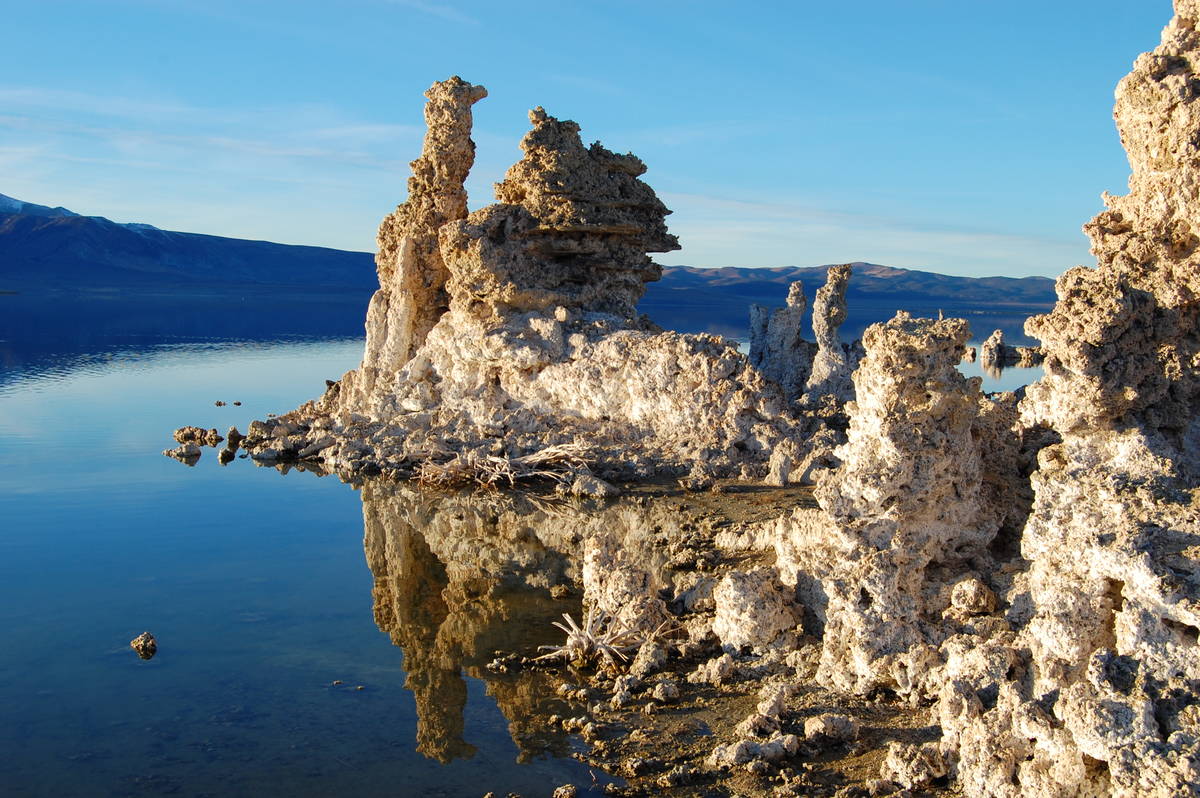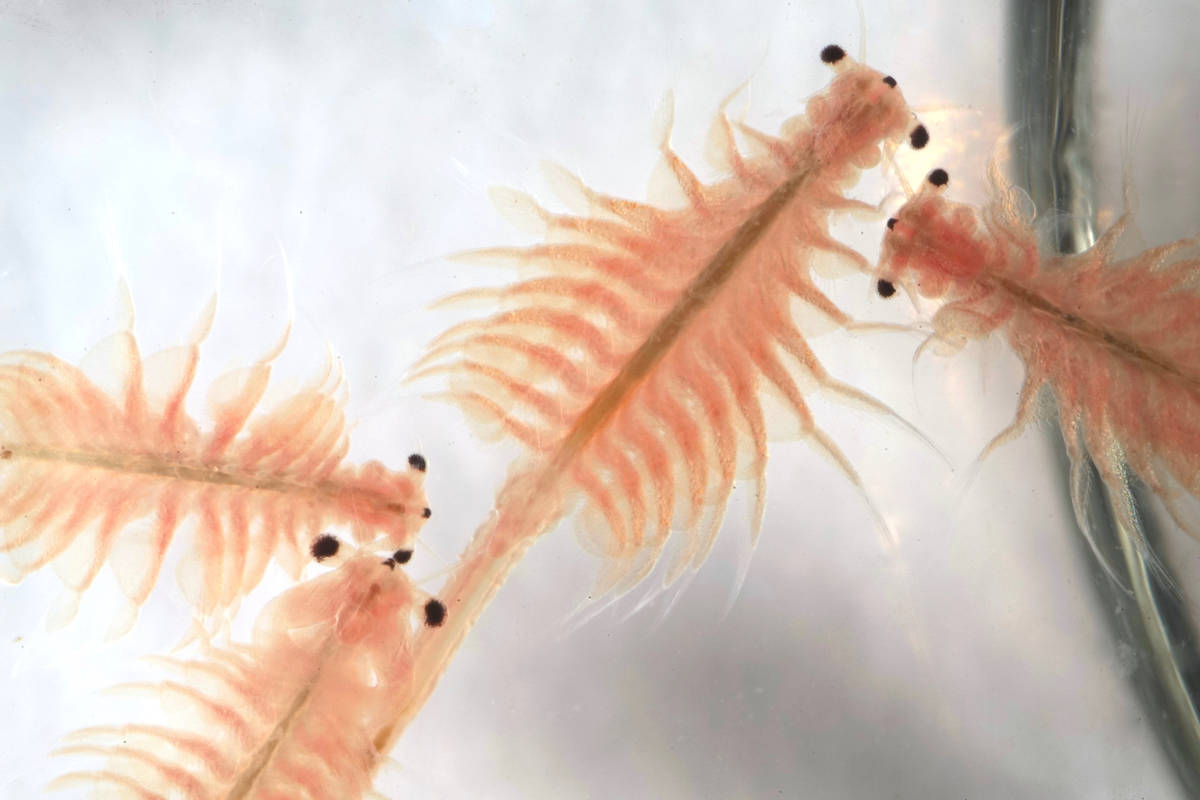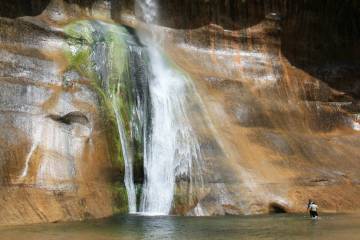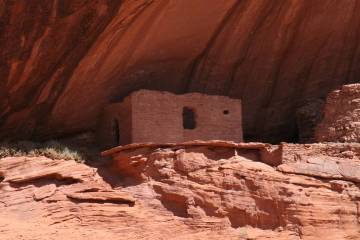Mono Lake, California, is a bird-watcher’s paradise
Mono Lake is just east of the Sierra Nevada Range near the small town of Lee Vining, California, the eastern gateway to Yosemite National Park. Seeing it is a uniquely Western experience, and summer is the time visit.
The lake is one of the most unusual bodies of water you will ever see. Not only is it one of the oldest lakes in North America, it has no outlets and has such a high concentration of mineral salts, fish cannot live there. The lake is full of brine shrimp, though, by the trillions, making many a tasty meal for resident and migratory birds, and unparalleled opportunities for those who like bird-watching. Brine shrimp grow to about a half-inch long and inhabit only highly saline inland waters such as here and the Great Salt Lake in Utah.
Mono Lake covers about 65 square miles and is more than twice as salty as the ocean, and 80 times as alkaline. Its rare ecosystem is a result of freshwater streams that empty into the lake, carrying minerals. When the water evaporates, the minerals remain. As calcium-rich freshwater springs pour into the lake below the surface, their waters mix with the carbonate-saturated and alkaline lake water, depositing calcium carbonate in the form of a soft limestone called “tufa.” This limestone is what you see now in the curious columns rising from the lake. While they were all formed underwater, many tufa formations extend above the surface because the water level has dropped over the years.
More than 80 species of migratory birds come in large numbers to the lake, including California gull, osprey, western snowy plovers, eared grebes and Wilson’s and red-necked phalaropes. Look for 80,000 to 100,000 phalaropes in July and August. More than 1 million eared grebes stop in during fall migration, from August through October. Nesting on the lake’s islands are California gulls, one of the largest concentrations in California. About 100 endangered western snowy plovers nest on the alkali flats of the lake’s eastern shore.
Mono Lake Tufa State Natural Reserve was established in 1982 to protect the tufa formations and the sensitive habitat for the up to 2 million birds that make their way here every year. The Mono Lake Scenic Area Visitor Center is just a few minutes’ drive north of Lee Vining. It offers wonderful views of the lake and informative displays on how the tufa is formed as well as the natural and human history of Mono Basin.
The reserve also has a few good hiking trails, including the best one to visit the tufa towers — the 1-mile self-guided nature trail at South Tufa. Kayaking is an excellent way to see and explore the lake. Since this is an important breeding ground for birds, there are temporary closures each year. From April 1 to Aug. 1, all access within a mile of the lake’s islands is restricted because of nesting California gulls. From April 1 to Sept. 1, visitors need to stay at least 200 yards from the tufa towers on the lake to protect nesting ospreys. The easiest place to launch a canoe or kayak is from Navy Beach on the south shore, as its parking area is closest to the shoreline.
Swimming in Mono Lake is quite an experience. The water is extremely buoyant, and you will get very salty so be sure to take along some fresh water to rinse off.
The reserve is open from 7 a.m. to 8 p.m. daily. For more information, call 760-647-6331 or visit parks.ca.gov.
The website notes that while there are campgrounds and dispersed camping opportunities nearby, they are generally first-come, first-served. Lee Vining has a few motels, but reservations are a must as they fill quickly. Bring clothing suitable for an alpine summer at more than 6,000 feet of elevation. Summer daytime temperatures are typically in the low 80s, dropping to the low 50s at night.



